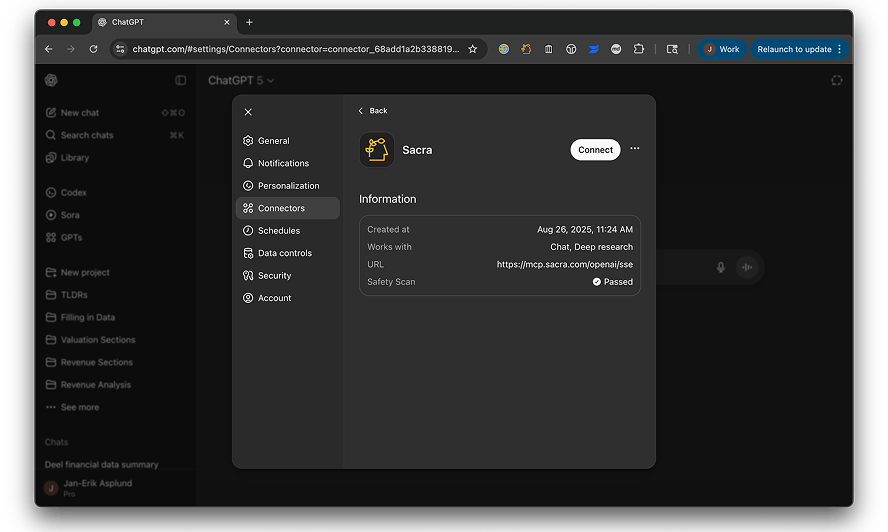We’re thrilled to announce this week’s exclusive with Chris Harvey, Emerging Fund lawyer & startup investor! Chris has been practicing law for 12 years as a venture capital lawyer and founded Harvey Esquire in 2015, which specializes in helping emerging fund managers, accelerators, venture studios, GPs and other venture investors with their legal needs. He covers everything from structuring fund formations and transaction documents such as LPAs, LLC/operating agreements, Series Seed, Series A, mergers & acquisitions, and all matters related to the venture capital lifecycle. He’s spent thousands of hours structuring cap tables and is also a startup and fund investor. We had the pleasure of sitting down to talk to him about:
- An evolution in the making: how venture capital has changed since he started working as a lawyer 🌏
- Advice for first time fund managers (including a free sample term sheet for a limited partnership agreement emerging)
- The 3 truths about venture capital 🤫
- Legaltech tools he uses 💻
- The state of venture funds in 2030 🔮

TCT: You’ve been practicing law for over 12 years as a venture capital lawyer, with a focus on emerging fund managers, accelerators, GPs and other ventures investors. In your opinion, how has the venture landscape changed since you began working with venture clients?
I got into venture capital law around the time the original SAFE launched in late 2013. AngelList had just received a no-action letter from the SEC to greenlight its equity crowdfunding platform. Congress had just passed the JOBS Act. “Yo” raised $1.5 million for its seed round the same year Uber raised $1.2 billion. People couldn’t stop talking about a bubble. It was a pretty exciting time.
And just as the regulatory landscape was shifting, venture capital was also undergoing a radical shift in culture. Startups and funds had always been told soliciting money from the public was illegal. Which had forced them to go public earlier than they wanted. If the 1990s were the decade of IPOs, the 2010s were the decade of megarounds and unicorns. Demo days soared, money poured in, Silicon Valley aired on HBO two years before Billions. Then, all of a sudden, it became cool to be a founder. Y Combinator became a scene in venture, kind of like what MTV did with the music industry in the 80s and 90s.
All of this interest in venture over the last several years has helped fuel changes in the innovation of legal structures for venture. Just like SAFEs made financing a Schelling point for startups and investors, Rolling Funds have opened the doors to a new class of emerging fund managers and LPs. And we are just starting to see the promise of what equity crowdfunding can do with a cap of $5 million per year.
It’s pretty cool to see operator-investors like Sahil Lavingia announcing the lessons of failing to build a VC-backed startup (Gumroad) to owning a Rolling Fund to successfully launching an equity crowdfunding campaign for Gumroad all in the span of one year. That kind of turnaround would have been impossible when I started.
You founded Harvey Esquire in 2015, a law firm designed for emerging fund managers (targeting private investment funds with less than $100M AUM) and founders (early stage investments across Series Seed and Series A). Can you tell us more about the firm’s progress to date, and the types of goals most fund managers and founders are looking to get out of formations and structures in 2021?
Originally it was just me, moving to a new city, hanging a shingle with no network. My law school friends thought I was nuts (they still do). My first couple of clients were co-working spaces, but not WeWork. I was introduced to the startup scene in Los Angeles. Some clients evolved, some failed, but most ended up becoming either emerging fund managers or repeat founders. There seems to be a natural lifecycle in the venture business: Founder > VC > Repeat.
Most emerging fund managers are looking for simple ways to structure their fund. A lot of managers are looking at AngelList and Carta. I don’t blame them. But at the same time, institutional investors generally prefer not to use these structures. Sometimes LPs want more control, different terms, side letters, complicated waterfall structures or less publicity than a more visible fund structure would offer.
Fred Wilson said there’s nothing standard in venture, and that’s true of venture capital funds.
Plus, fund managers always have legal needs outside of the fund formation process, whether it’s financing deal structures or offering terms to their portfolio companies. Sometimes our clients want us to start right away because they have pressing needs like a warehouse deal or an SPV to form quickly, or some other considerations that don’t fit neatly within a cookie-cutter package that takes 1-3 months before you can get on the platform.
What advice would you give to first time fund managers looking to form their first fund?
I recently did a Clubhouse chat with Ripple Ventures founder Matt Cohen on this topic. They recorded it and made it into a podcast, here’s the link.
You can read more about this topic on my Law of VC article here:
Fund Closing checklist I send to clients:
Finally, here’s a sample term sheet for a limited partnership agreement emerging:
What’s the most complicated deal you’ve helped structure to date?
The most complicated structure I worked on had the least amount of money involved. My client had a brilliant idea: Start a venture capital fund with no money. The idea was simple. Connect startups with big contracts paid by a vendor who offered guaranteed funds (revenues started at $150,000 and went to $15+ million). The money was guaranteed because it was coming from the government.
The only sticking point was figuring out how to structure the fund because receiving equity in a company comes at a price. The price is the fair market value. There’s no free lunch when it comes to startups and taxes, so we had to figure out a way that would be both capital efficient and not run afoul of tax laws. We could have recommended Common Stock, Notes, Options, Warrants or SAFEs. We settled on SAFEs, purchased mostly from the revenues of the contract, with the ability of the startup to clawback the equity if the contract was never performed. It had a complicated buyback formula built into the SAFE, which carried over once the SAFE converted. We took a $30,000 budget which would have cost our client at least 10x that at a big law firm. That fund will probably go down as the highest returning fund in the history of venture capital only because it essentially had no budget.
Sign Up Today!
To get these right in your inbox
What’s the best kept secret in the legal industry with regards to the startup and venture ecosystem?
- Legally, anybody can be a venture capitalist.
- It's the only asset class in which the asset picks the manager.
- Raising a fund is like a Walk-a-Thon: People pledge you money, you do the hard work, run, and THEN you collect the money and give it to someone else who can make an impact in your life.
You’ve noted in your newsletter, Law of VC, that while the legal industry is ripe for disruption, we’ve still yet to see this industry change much (Atrium was a $75M VC-backed legaltech company & law firm that shut down last year). In your opinion, what changes (if any) will we see in the legal industry? What legaltech tools or services do you use?
Legal: An industry ripe for disr… ...egarding all signs it’s broken:
Law of VC, Ep. #17 - Status Games
— Chris Harvey (@ChrisHarveyEsq) February 8, 2021
Legal, an industry ripe for disruption:
• $1,250 per hour law partner
• $800 per hour associate attorney
In 2019, Am Law 100 earned $104 billion
• Avg. revenue per lawyer = $1m
• Avg. profit per partner = $2mhttps://t.co/iInuUIgaNE
Here was the most shocking part of that article:
Changes in top global brands from 2006-2021:

vs.
Change in top law firms from 2006-2021:

What’s the key difference between these two charts?
Here’s my legal tech stack outside of Google/Microsoft/Amazon:
- Woodpecker (Doc Assembly)
- Workshare Compare (Professional Redlines)
- Contract Tools
- Roam
- Zapier
See also
What legal tech is helping you get through this pandemic? #lawyers #legaltech #learning
— Colin S. Levy (@Clevy_Law) April 17, 2020
By trade, you see hundreds of deals coming from founders, GPs, LPs and so forth. Have you personally invested in any of these companies? What excites you about a company or fund that you’d like to invest in? Are there any limitations for which companies or funds you can invest in?
Early in my career I received equity in a number of startups that have pretty much all failed or returned less than the time I put into them. I have gotten a lot smarter over the years and now invest in a couple of funds a year with a fee split model. Funds are less likely to return major marks but more likely to be a great way to diversify my portfolio. I prefer the chance to make real returns over waiting for some magical unicorn to show me the pot of gold at the end of the rainbow. That being said, some of my clients have received generational wealth chasing that ideal and I am happy for them.
What are your goals as a private market investor?
It’s simple: play the long game.
What is your first 10x/100x and how did you get into that deal?
All of my returns that fit that band are on paper. Any startup or venture deal I have done has been with a client.
What’s your secret for getting on the cap table?
All of my investments have been with clients, but the secret is writing. I started writing in 2014 on Quora, became a top writer (which doesn’t take much ability, just time and patience). I also published a chapter in a book, which led me to work with Andy Sparks in The Holloway Guide to Raising Venture Capital. Since then, my Substack has brought me into opportunities that would never have been possible had I just been a lawyer.
Writing opens doors.
On the flip, what’s your biggest cap table “mistake”?
Cap tables are something that have been my life over the last few years. While I know the question was asking about getting onto cap tables, in my line of work it means legal mistakes. There have been plenty. Mostly because I assumed things that turned out to be not true or subject to interpretation. Last year, I wrote an article about the mistakes I learned with cap tables, and it’s been my best performing article so far.
What’s your favorite part of your job?
I love keeping up on industry trends by writing, reading and scrolling through an awful amount of tweets. Twitter is a blessing and a curse. But the best part of it is interacting with interesting people and their crazy ideas.
What are you passionate about outside of work?
Reading books and chasing after my 20-month year old. Lame, I know.
What’s the state of venture funds in 2030?
Balaji Srinivasan said we will see a transition this century from wage labor to capital investing, where everyone becomes investors. You’re starting to see it in the startup world, with companies like Carta who are productizing the cap table with CartaX. You’re starting to see it in the venture world, where AngelList has created the concept of a Rolling Fund and Roll Up Vehicles. You see it everywhere in crypto, like Bitclout, the crypto social network. Pretty soon everyone will literally have their own coin or fund that invests into people, companies, funds and missions. Whether we get there by 2030 is too hard to tell, but that’s where we are headed.
Follow Chris on Twitter (@ChrisHarveyEsq) for more insights into emerging funds, startups and the laws behind them
Deal News 4/2-4/9
Seed
- Volastra Therapeutics: $32,000,000 led by Catalio Capital Management, Vida Ventures. Volastra Therapeutics is a biotechnology company developing novel therapies for the treatment of metastatic cancers.
- Empathy: $13,000,000 led by Aleph, General Catalyst. Empathy is a platform for families to deal with the loss of their people.
- Guardian Agriculture: $10,500,000 led by Leaps by Bayer. Guardian Agriculture is an eVTOL-powered crop protection company.
- SchoolHouse: $8,100,000 led by Pace Capital. SchoolHouse is an EdTech startup that provides micro schooling or at home education solutions.
- Abacum: $7,000,000 led by Creandum. Abacum is a SaaS that helps finance teams deliver business insights.
Series A
- Tripledot Studios: $78,000,000 led by Lightspeed Venture Partners. Tripledot Studios is a mobile games studio.
- Mineralys Therapeutics: $40,000,000 led by HBM Healthcare Investments AG, Samsara BioCapital. Mineralys Therapeutics is a clinical-stage biopharmaceutical company committed to developing therapy for the treatment of hypertension
- Mercato: $26,000,000 led by Velvet Sea Ventures. Mercato is an online grocery marketplace that connects consumers with local merchants.
- Prosimo.io: $25,000,000 led by General Catalyst, WRVI Capital. Prosimo.io is a cloud Infrastructure that provides fast and secure experiences for all enterprise applications.
- Mission Barns: $24,000,00. Mission Barns is making the juicy, savory meats they all love in a sustainable, more efficient way.
Series B
- OneStream Software: $200,000,000 led by D1 Capital Partners. OneStream Software is an independent software company that develops a financial planning and analysis software.
- Ramp: $115,000,000 led by D1 Capital Partners, Stripe. Ramp is a technology company that develops corporate cards designed to save money for businesses.
- Icosavax: $100,000,000 led by RA Capital Management. Icosavax is focused on developing safe and effective vaccines against infectious diseases that address important unmet medical needs.
- Ventus Therapeutics: $100,000,000 led by RA Capital Management. Ventus Therapeutics is a biopharmaceutical company developing novel small molecule medicines that target the innate immune system
- BRYTER: $66,000,000 led by Tiger Global Management. BRYTER is a no-code software platform that automates and helps its users develop and build digital applications.
- CaptivateIQ: $46,000,000 led by Accel. CaptivateIQ is a modern sales compensation software aimed to help businesses leverage the power of incentives to motivate teams.
- Firefly Health: $40,000,000 led by Andreessen Horowitz. Firefly Health is a virtual-first health care company that provides primary healthcare services that redefine high-quality patient care.
- Vizgen: $37,000,000 led by Northpond Ventures, Novalis LifeSciences. Vizgen is a biotech company developing solutions for next-generation spatially resolved, single-cell transcriptomics.
- Snorkel AI: $35,000,000 led by Lightspeed Venture Partners. Snorkel AI is a technology startup that accelerates enterprise AI application development and deployment through programmatic data labeling.
- Streamlit: $35,000,000 led by Sequoia Capital. Streamlit is an open-source app framework for creating and deploying data science applications.
Series C
- OneTrust: $210,000,000 led by SoftBank Vision Fund. OneTrust helps companies manage privacy, security and governance requirements in a regulatory environment that constantly changes.
- Sendbird: $100,000,000 led by Steadfast Financial. Sendbird developed a messaging-as-a-service API that provides chat, voice, and video messaging for mobile apps and websites.
- Pendulum Therapeutics: $54,000,000 led by Meritech Capital Partners. Pendulum Therapeutics is a biotechnology company improving health through products targeting the microbiome.
- Blue Dot: $32,000,000 led by Ibex Investors, Lutetia Technology Partners. Blue Dot is a provider of an AI-driven and cloud-based tax compliance platform.\
Series D
- Plaid: $425,000,000 led by Altimeter Capital. Plaid provides companies with the tools and access needed for the development of a digitally-enabled financial system.
- Phenom People: $100,000,000 led by B Capital Group. Phenom is a recruitment platform that leverages AI to help companies attract new talents.
- TrueLayer: $70,000,000 led by Addition. TrueLayer is a fintech platform utilized to build financial apps that connect to bank data, verify accounts, and access transactions.
Series E
- Inscripta: $150,000,000 led by Fidelity Management and Research Company. Inscripta is a life science technology company that develops digital genome engineering solutions.
- StockX: $60,000,000 led by Altimeter Capital, Dragoneer Investment Group. StockX is an online marketplace to buy and sell limited edition and high demand sneakers.
Series F
- Patreon: $155,000,000 led by Tiger Global Management. Patreon is an online platform connecting musicians and other artists with their fan base.
- GupShup: $100,000,000 led by Tiger Global Management. Gupshup enables its users to communicate and share their short messages privately and publicly.


